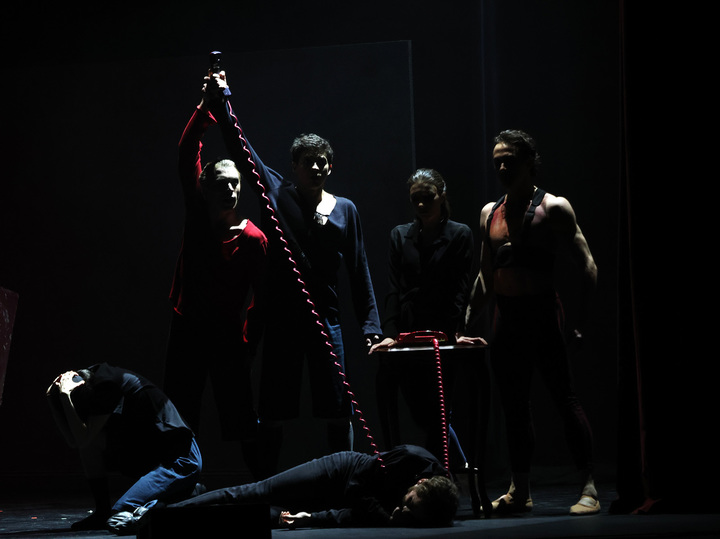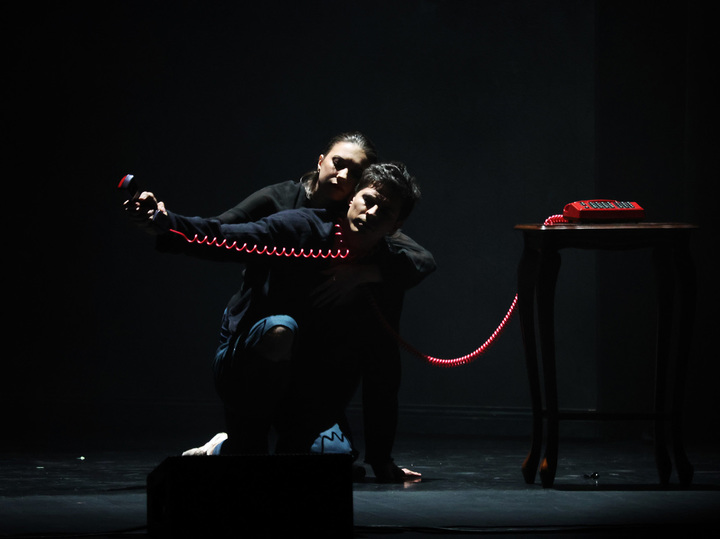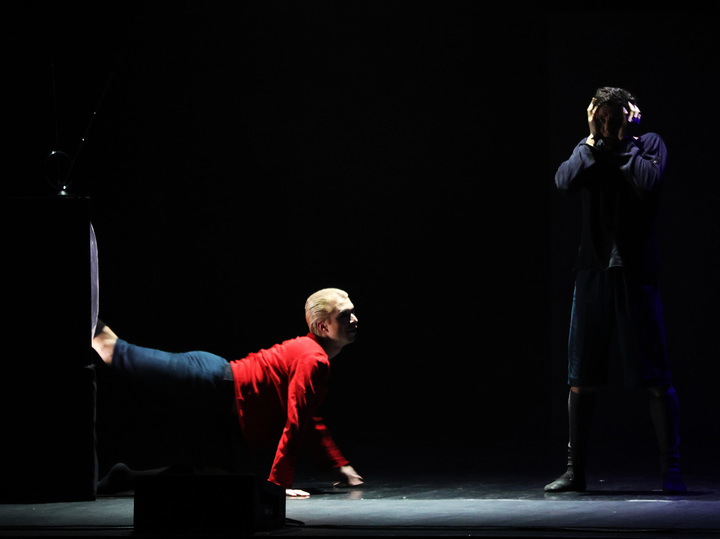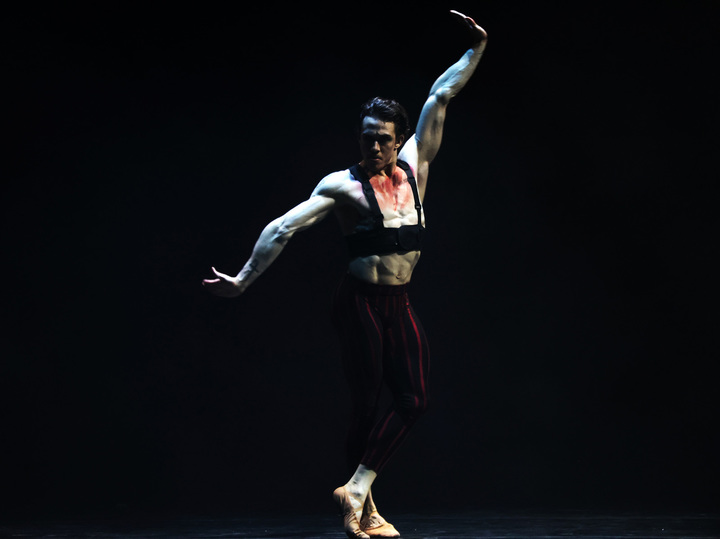The day before the terrorist attack, a crowd of ghosts gathered in Crocus City Hall
[ad_1]
That evening, nothing foreshadowed the upcoming terrible tragedy that would occur in this hall the next day. Security at the metal detectors carefully checked the spectators who came to the performance: they scanned tickets and inspected bags. In the lobby, several photographers were taking pictures of visitors. There weren’t many of them. The performance was intimate, the upper tier of the hall was closed that evening, tickets were sold only to the stalls, and it was not completely filled. At the entrance to the hall, the tickets were checked again, asking to leave the bottle of sparkling water purchased immediately before the performance on a nearby buffet table or to finish it. Everything was apparently as always. The ballet “Milligan’s Personalities” began at 20:00.

Books have been written based on this story. The most famous, 1981, is Daniel Keyes’s novel The Many Minds of Billy Milligan, which has been translated into 14 languages, including Russian. Billy, in whom 24 personalities lived, has been the subject of a 10-episode series, documentaries, and is now being filmed a feature film, “A Crowded Room,” where Tom Holland is set to play the leading role. The two-act ballet, created to music specially written for it by Elmir Nizamov, preceded the release of “A Crowded Room.”
The room, indicated on the stage by a sofa with a blank-eyed man sitting on it and a partition representing a wall, is indeed crowded with a crowd of ghosts. They are displayed on the wall by video projection. These are the personalities into which Milligan transforms.
The ghosts remain projections for only a short time – then they materialize on stage. One (this personality of Milligan is perfectly embodied in the play by the soloist of the Moscow Musical Theater named after Stanislavsky and Nemirovich-Danchenko Georgi Smilevsky Jr.) crawls out of the TV that stands opposite the sofa. Others appear on stage from the darkness of the stage: first, a girl appears from the darkness. This is Adelaide (Dina Andronova) – his alter personality, a come to life fantasy. She helps him free himself from the noose – a telephone wire – a symbol of his loneliness, which wrapped around his neck when trying to call someone (the action takes place in the 70s in the USA). Following Adelaide, new personalities appear: the child Dave, the intellectual Archie, the strongman Ranger and others. Through plastic arts, different, often opposing images are created in ballet. They dive and disappear into the couch. The sofa, the wall, the telephone loop wire are important decorative elements of the play, invented by the production designer and costume designer of the play Elisey Shepelev.
The ballet “Milligan’s Personalities” was created by a young, but, judging by the presented work, a promising and interesting choreographer, ex-premier of the Eifman troupe Oleg Gabyshev. The ballet was staged specially for the premiere of the Kazan ballet troupe of the theater. Musa Jalil Oleg Ivenko, known, however, not only as a ballet dancer, but also as a film artist. In 2018, he starred as Nureyev in the film directed by British director Ralph Fiennes (BBC Films), dedicated to the world-famous dancer “The White Raven.” And there are plenty of hallmarks of the “cinematic” style in the ballet: the arrangement of episodes, solo close-ups, the presentation of the role as if you were being filmed on a movie camera, and the music at times was clearly oriented toward “cinematic” music.

The ballet was conceived four years ago, during the pandemic. The initiator is Oleg Ivenko, who became not only the main performer, but also the producer of the production. The artist does not expect new roles from his superiors, but creates them for himself, or, more precisely, initiates their creation: he organized a team of like-minded people who help bring his plans to life, found a composer, negotiated with a number of Russian choreographers and, as a result, chose the best idea , called the artist, artists. The first part of the ballet was shown two years ago. And the premiere of the entire ballet took place at the Kazan Opera and Ballet Theater in November last year as part of the StagePlatforma festival. That evening the ballet was shown in Moscow.
Oleg Gabyshev started staging a long time ago. He announced himself as a choreographer at the XII International Competition of Ballet Dancers and Choreographers, which is held at the Bolshoi Theater every four years. There he received a silver medal, and “gold” was not awarded to anyone that time. At first these were small numbers, but now Oleg stages full-fledged ballet performances.
The musical component also means a lot to him. In Ufa at the end of last year he staged the three-act ballet “Rachmaninov. A Symphony of a Lifetime” is a biographical performance dedicated to the work of the great Russian composer, pianist and conductor. And the score of this ballet contains the best works of Rachmaninov himself, as well as inclusions of works by Tchaikovsky, Mussorgsky and Karl Czerny.
In the ballet “Milligan’s Personalities,” the choreographer worked with the music of the modern composer Elmir Nizamov, for whom “Milligan’s Personalities” became the first ballet in his work. The music author and choreographer worked in very close collaboration. Literally like this: the composer came to rehearsals, looked at the choreographer’s work and made changes to the score. The writing well reflects the deepening darkness of the protagonist’s psyche.
And Oleg Gabyshev’s idea really turned out to be non-trivial. One of the most amazing artists of the legendary Eifman company (due to being busy implementing his own plans, Oleg recently left the company) and, probably, the brightest executor of the great choreographer’s plans in the last decade, he learned a lot from him: he is concerned with the same topic of comprehending human psychophysics personalities, like the Masters… Oleg Gabyshev turned precisely to revealing the depths of the human psyche in the ballet “Milligan’s Personalities”. Here he explores the splitting of the protagonist’s personality into many components.
Difficulties have haunted Billigan since childhood. The stepfather, a drunkard, a psychopath and a sadist, constantly beats the teenager. And the people who appear in his fantasies help him escape from this reality. They materialize from his subconscious. The most dramatic scene of the first act is the reprisal that a company of schizoid individuals inflicts on the protagonist’s stepfather, entangling the latter’s neck with a telephone wire at the end of the first act.
Initially conceived as a one-man show, the concept of the ballet was transformed during the production into a full-fledged, extended two-act performance, which featured six performers. Since the artists include such virtuoso performers as the gold laureate of the last Moscow international competition, the Brazilian Wagner Carvalho (performing the role of the “muscle” Ranger), and Oleg Ivenko himself has considerable technical equipment, Oleg Gabyshev filled his ballet with virtuoso elements of performing technique, complex lifts, which, however, like Eifman’s, did not look like puzzling tricks, but were emotional outbursts and reflected the complex mental organization of the protagonist.

The performer of the role of Milligan’s main personality successfully performed the role as an actor. He, like Olga Spesivtseva once did, visited psychiatric clinics and observed the behavior of mental patients with multiple personalities in order to reliably create the scene of madness in the ballet “Giselle”. So his image turned out to be frighteningly reliable and at the same time tragically charming…
Oleg Gabyshev also used grotesque plastic vocabulary in his performance, which organically fell on, for example, the performer of another Milligan personality – Alain – Georgi Smilevski (junior). And in general, all the roles were thought out to match the performers, taking into account their characteristics and capabilities, and it looked very organic.
In the music, at the request of the director, the composer stylized classics, jazz, tango, and avant-garde, which was reflected in the choreography, like Eifman’s, based on classical vocabulary, enriched with the style of modern dance.
In his ballet, Oleg Gabyshev famously twists the intrigue. The second act appears to take place in a hospital ward. We see a woman (Olesya Pichugina) dressed in something resembling a medical gown. She walks out of the audience onto the stage and forces Milligan to look at the photos of his different personalities flashing on her tablet, holding his head tightly in her hands, preventing him from turning away. And then he injects the patient in the neck.
The tough experiment ends in success. Having first been an “evil investigator,” after the injection she turns into a “good” one: she tries to help her patient, explain to him who he really is. Lonely Milligan gains confidence in her, and a close relationship develops between them. The well-choreographed duet danced by Oleg Ivenko and Olesya Pichugina resembles a love affair. The doctor motivated her patient to repress other personalities from the sick subconscious. They all lie at the feet of the protagonist, entangled in a red telephone wire. He becomes a whole person and not split in the subconscious.
The ballet ends unexpectedly: another doctor appears on stage, shining a flashlight on a woman who has just been a doctor sitting on a mountain of mattresses in Milligan’s hospital pajamas. The doctor turns out to be one of Milligan’s entities. Having provoked psychological shock in the hero with her harsh experiment, she eventually becomes the main personality in his subconscious.

Due to technical difficulties, the audience was unable to see the last seconds of the ballet finale. As the director himself said after the performance, at the moment when the new doctor illuminates the former doctor with his flashlight, Milligan himself, Oleg Ivenko, was supposed to be hitting the glass in the mirror on stage. In Moscow, the ending was changed: the main character breaks out of the wall at the end of the ballet.
[ad_2]
Source link






